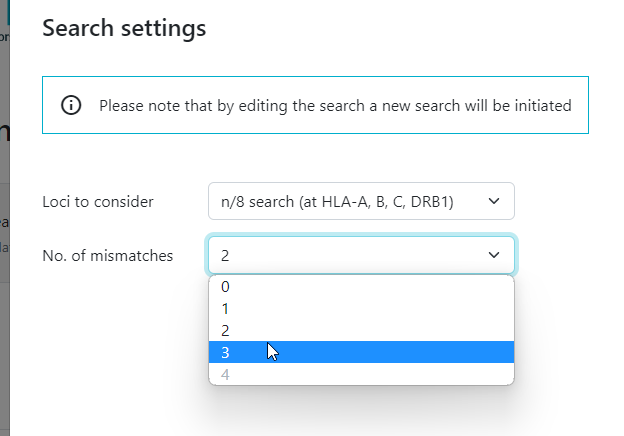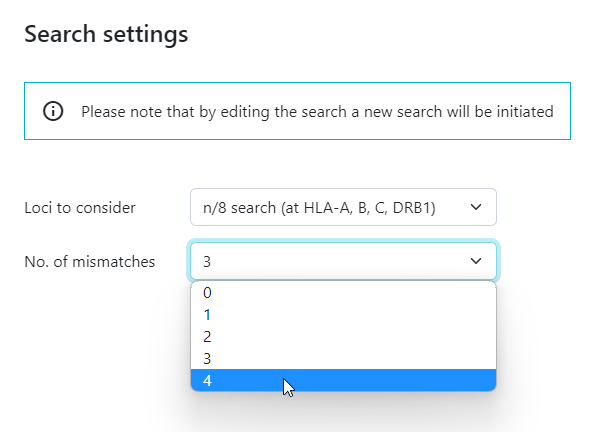...
- Step 1: run a two mismatch cord blood search, before you can start a 3 mismatch search
- Step 2: run a three mismatch cord blood search before you can start a four mismatch cord blood search
What is important to know about three and/or four mismatch
...
searches?
In the old version of Search & Match Service, no overall match probabilities calculations for cord blood were done and . The sorting was performed within the match class (i.e. 5/8. 4/8) based on the Total Nucleated Cell (TNC) or CD34+ cell counts (depending on what a search coordinator prefers). This has been implemented in the same way for the new version of Search & Match Service operating with the Hap-E matching algorithm.
In the new version of Search & Match Service the number of search results can be bigger, as the Hap-E algorithm returns more potential cord blood units. If you experience a high number of potential cord blood options, you can for example filter on the minimum TNC, minimum CD34+ or by certain registries or mismatch locations.
Future improvements
How is sorting done of three and/or four mismatch searches?
Three and/or four mismatch cord blood As mentioned above, since 3 and 4 mismatch CBU search results do not have any match probabilities calculated, the results are currently sorted within their match class (e.g. 5/8, 4/8) only by TNC or CD34+. The Hap-E algorithm in the new Search & Match service Service returns more potential CBUs cord blood units than the legacy system. Many of these “extra” CBUs cord blood units tend to be low probability CBUs that cord blood options, because these cord blood units have low HLA resolution or missing allele typing. This is not actually “wrong” because they are a potential match, but many of these tend to not be good candidate CBUs.
This means that a poorly matched CBUs cord blood units with high cell dose are at the top of the match list and potentially better CBUs cord blood units with a high enough cell dose are lower. This has always been the case in legacy Search & Match as well, but This means that in our new Search & Match Service it is harder to idenity the best possible cord blood, because of the increased number of valid potential matches, it is a bit harder to find suitable CBUs than the legacy Search & Match.
In an effort to improve the search coordinator's experience when performing 3 and 4 mismatch searches we are currently developing several features that should improve the efficiency of finding suitable CBUs. These are:
...

